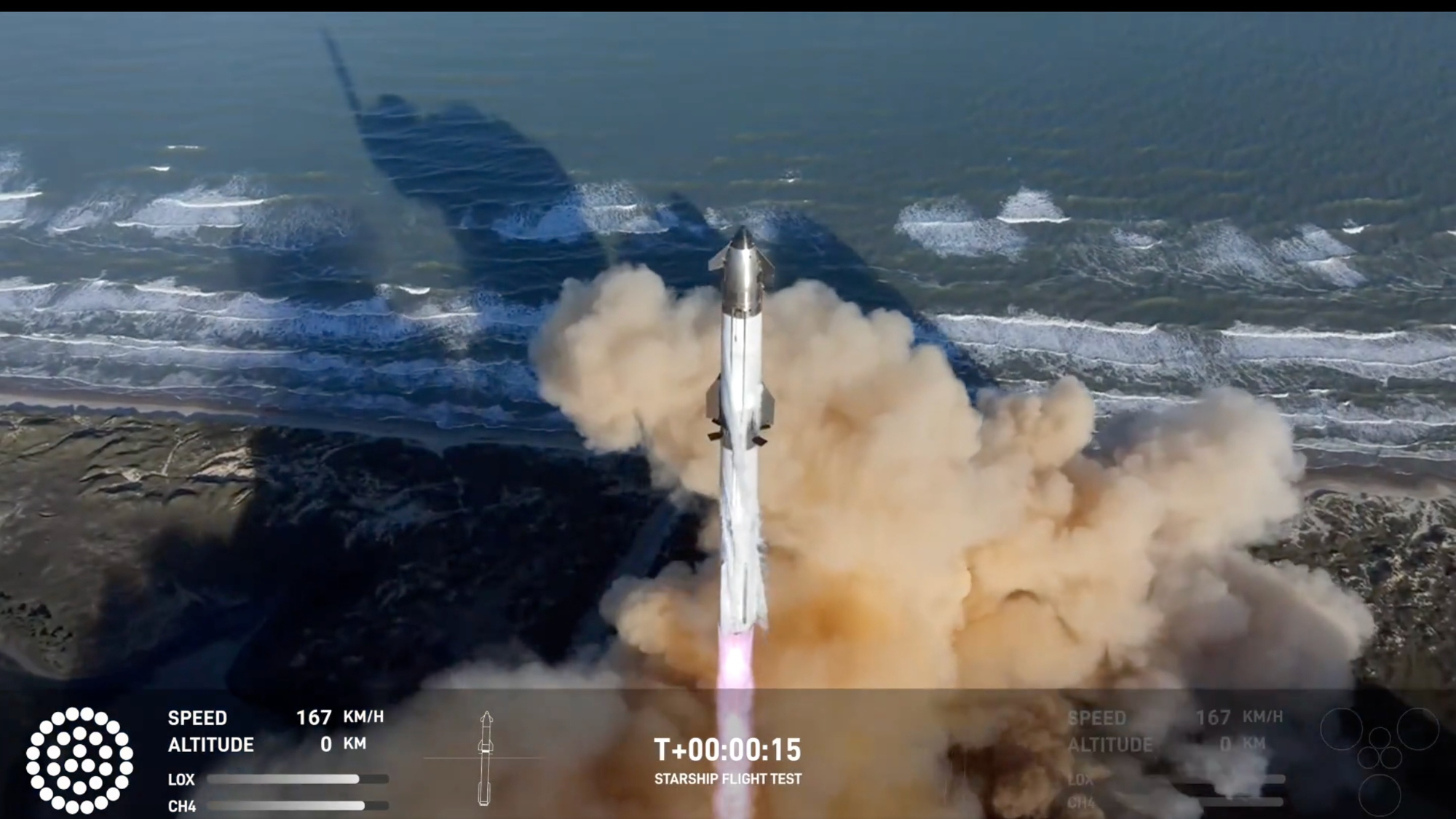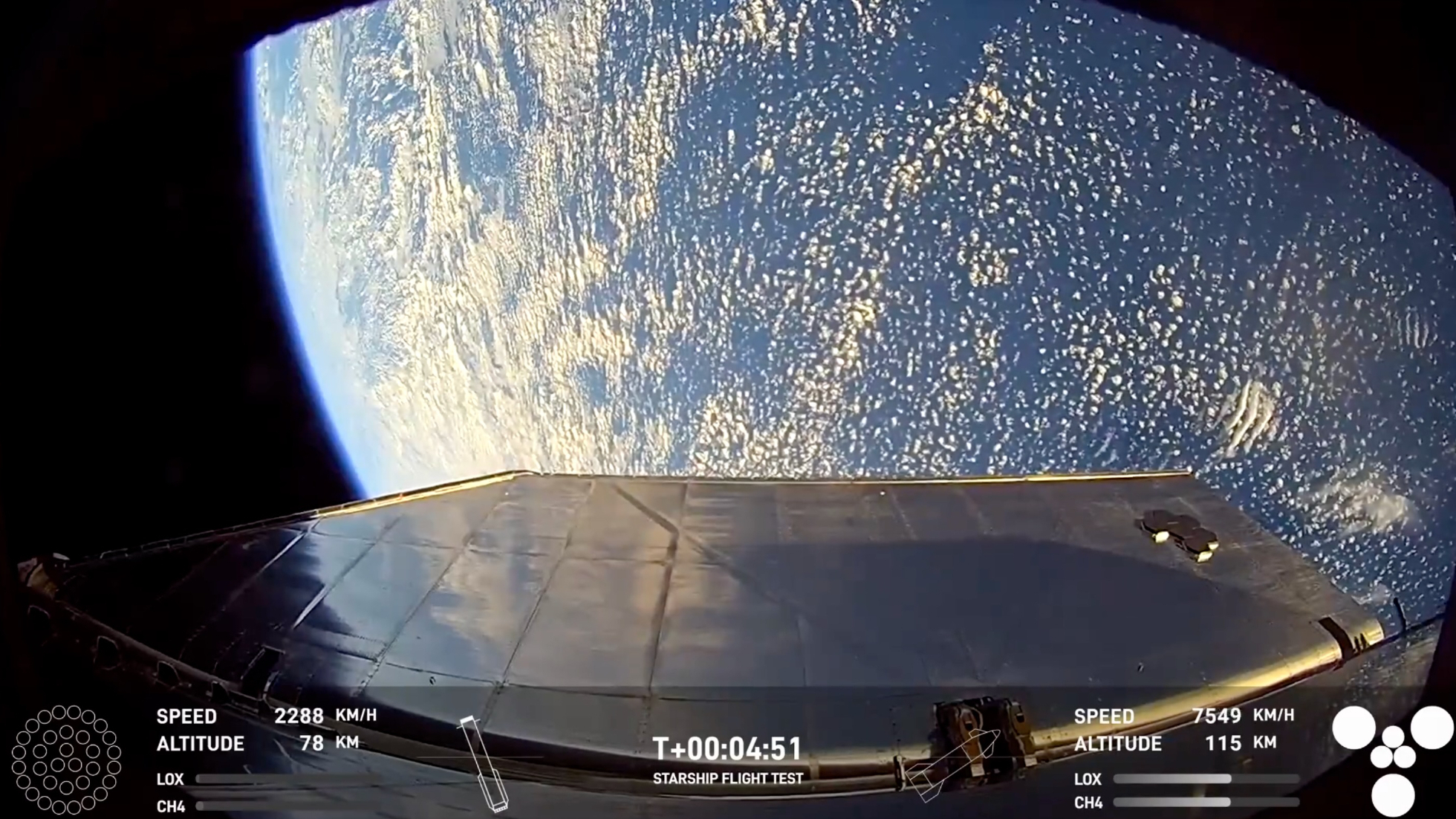The seventh test flight of SpaceX’s Starship had some serious highs and lows.
The company launched its Starship megarocket for the seventh time ever today (Jan. 16), sending the 403.5-foot-tall (123 meters) reusable vehicle aloft from its Starbase site in South Texas at 5:37 p.m. EST (2237 GMT; 4:37 p.m. local time).
One of the goals of this ambitious test flight was to catch Starship’s giant first-stage booster, known as Super Heavy, back at Starbase’s launch tower, using the structure’s “chopstick” arms. SpaceX pulled this off for the first time on Starship Flight 5 in October — and did so again today.
The 33-engine booster nestled softly into the tower’s arms about seven minutes after liftoff today, showcasing the time-saving recovery strategy that SpaceX intends to use for both Super Heavy and Ship, Starship’s 171-foot-tall (52-meter-tall) upper stage.
Related: Starship and Super Heavy explained
But not everything went to plan today. SpaceX lost contact with Ship around 8.5 minutes into flight, apparently after the vehicle suffered some kind of anomaly.
All six of Ship’s Raptor engines fired up during the stage’s ascent burn, “but as we were getting to the end of that ascent burn, we saw engines dropping out on telemetry, and we have since lost contact with the Ship,” Dan Huot, of SpaceX’s communications team, said during the company’s launch webcast.
Huot and fellow webcast host Kate Tice later confirmed that Ship had been lost. The reasons were not immediately clear, the duo said.
Ship was supposed to fly much of the way around the world, then splash down softly in the Indian Ocean off the west coast of Australia about 66 minutes after liftoff, as it did on the three previous Starship launches.
Flight 7 was supposed to feature something new for Ship as well: About 17.5 minutes after liftoff, the upper stage was to deploy 10 mock satellites similar in size and weight to the next-gen version of SpaceX’s Starlink broadband spacecraft. Ship didn’t make it that far into flight, however.
The deployment would have been useful practice. SpaceX is counting on Starship to finish building out its Starlink megaconstellation, which currently consists of nearly 7,000 satellites in low Earth orbit but could eventually harbor more than 40,000 craft.
The dummy satellites were to follow Ship’s suborbital trajectory, ultimately splashing down in the Indian Ocean, SpaceX wrote in a Flight 7 mission description.
As Huot and Tice noted, the Ship upper stage flying today was a new iteration that sported a suite of upgrades and modifications.
“The vehicle’s forward flaps have been reduced in size and shifted towards the vehicle tip and away from the heat shield, significantly reducing their exposure to reentry heating while simplifying the underlying mechanisms and protective tiling,” SpaceX wrote in the mission description.
“Redesigns to the propulsion system, including a 25% increase in propellant volume, the vacuum jacketing of feedlines, a new fuel feedline system for the vehicle’s Raptor vacuum engines, and an improved propulsion avionics module controlling vehicle valves and reading sensors, all add additional vehicle performance and the ability to fly longer missions,” the company added.
These modifications added about 6.5 feet to the vehicle’s length, according to SpaceX.
The Super Heavy that flew today was largely the same as recent boosters, but it did have one novel feature. In a Super Heavy first, it employed used hardware — a Raptor engine that also flew on Flight 5.
Starship’s previous six test flights occurred in April and November of 2023 and March, June, October and November of last year. SpaceX aimed to conduct a chopsticks catch of Super Heavy on Flight 6 as well, but a communication issue with the launch tower nixed that try, and the booster diverted for a Gulf of Mexico splashdown.
SpaceX is developing Starship, the biggest and most powerful rocket ever built, to help humanity settle the moon and Mars, among other feats. And we should expect to see more than a mere handful of Starship test flights this year; the company aims to make serious progress on the vehicle in 2025.
“This new year will be transformational for Starship, with the goal of bringing reuse of the entire system online and flying increasingly ambitious missions as we iterate towards being able to send humans and cargo to Earth orbit, the moon and Mars,” SpaceX wrote in the Flight 7 mission description.






